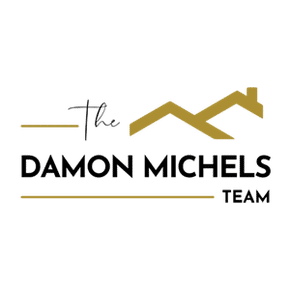Chestnut Hill
About Chestnut Hill
Chestnut Hill is a neighborhood in the Northwest Philadelphia section of the United States city of Philadelphia, Pennsylvania. The village of Chestnut Hill was part of the German Township laid out by Francis Daniel Pastorius and came to include the settlements originally known as Sommerhausen and Crefeld, as well as part of Cresheim. It served as a gateway between Philadelphia and the nearby farmlands. During the American Revolutionary War era (late 18th century), the area was one of many summer vacation spots due to its higher elevation, 400–500 feet (120 to 150 m) above sea level, and cooler temperatures than the historic Center City. Chestnut Hill is still stereotypically known as one of the more affluent sections of Philadelphia. However, there are many residents who fall within lower/middle class incomes.
Chestnut Hill (along with many other towns and farmlands of Philadelphia County) became part of the City of Philadelphia in 1854 as part of the Act of Consolidation, when the County and the City became completely coterminous. In the same year, the Chestnut Hill Railroad opened, making an easy commute to and from Center City.
Geography
Chestnut Hill is bounded as follows:
- On the northwest by Northwestern Avenue (a county line and city limit, beyond which lies a panhandle of Springfield Township, Montgomery County that juts into Whitemarsh Township);
- On the west by the Wissahickon Gorge (part of Fairmount Park) (beyond which lie Upper Roxborough and Andorra);
- On the northeast by Stenton Avenue (a county line and city limit, beyond which lie Erdenheim and Wyndmoor, Springfield Township); and
- On the southeast by the Cresheim Valley (part of Fairmount Park) (beyond which lies Mount Airy).
Architecture and housing stock
Housing in Chestnut Hill is very expensive for this region. In 2011, it had a median home sale price of $629,500—the highest of any Philadelphia neighborhood outside of Center City. This price was an increase of 57% from its 2005 median price.
The Chestnut Hill listings on the National Register of Historic Places:
- Anglecot (1883), designed by Wilson Eyre.
- Chestnut Hill Historic District
- Druim Moir Historic District, includes Romanesque Revival mansion (1883–86), designed by G. W. & W. D. Hewitt.
- Graver's Lane Station (1883), designed by Frank Furness.
- John Story Jenks School (1922), designed by Irwin T. Catharine.
- Thomas Mill Bridge (across the Wissahickon Creek, the only traditional covered bridge in Philadelphia).
- Wissahickon Inn (now Chestnut Hill Academy) (1883–84), designed by G. W. & W. D. Hewitt.
Other historic and notable properties include:
- High Hollow, The George Howe House (1914–17), designed by George Howe
- Inglewood Cottage (1850), designed by Thomas Ustick Walter.
- The former site of Boxly, the estate of Frederick Winslow Taylor, where Taylor often received the business-management pilgrims who came to meet the "Father of Scientific Management".
- Esherick House (1961), designed by Louis Kahn.
- Vanna Venturi House (1962–64), designed by Robert Venturi.
Architecture and housing stock
Public transportation in southeastern Pennsylvania, which includes Philadelphia and the surrounding counties, is provided by SEPTA, the region's mass transit authority.
Regional rail (commuter rail)
Two SEPTA Regional Rail lines serve Chestnut Hill: the Chestnut Hill East Line and Chestnut Hill West Line.
Buses
Chestnut Hill is served by SEPTA bus routes from both the City Transit Division (23, 77 and L) and the Suburban Division (94 and 97).
Trolleys (trams)
Trams in the southeastern Pennsylvania region are known as trolleys. The trolley network of this region was very extensive prior to World War II, but has shrunk since that era. Chestnut Hill was formerly served by trolleys. Trolley service to Chestnut Hill began in 1894, and trolley tracks still run down the Belgian-block-paved main street of the neighborhood, Germantown Avenue. SEPTA "temporarily suspended" regular trolley service in 1992. From 1992 until 1996, weekend-only service ran between Chestnut Hill and Mount Airy, re-branded The "Chestnut Hill Trolley." Sporadic trolley charter trips ran down Germantown Avenue and into North Philadelphia until 2003. In 2010, PennDOT completed work on restoring segments of the trolley infrastructure and streetscape in Chestnut Hill, Mount Airy and Germantown. As of 2011, SEPTA spokespeople publicly state that there are no plans to reinstate trolley service on the 23, despite claims to the contrary in their annual capital budget reports.
Read More ▾Avg Work Commute
0 minsMedian Age
0Median Area Income
$0Median Sale Price
$0The Commute
Travel Methods
To City CenterChestnut Hill Sales Data
Percentage change from latest quarter vs same time period previous year
Data compiled using 2nd quarter 2024 data vs. same period from 2023
Median Sales Price
MEDIAN SALES PRICE

Demographics
- Filter by:
- Population
- Income
- Education
- Market Rents
Population by Age Level. Median Age 42.28. Households: 4,411.
In Thousand of Dollars. (Median Income: $91,167)
Population by Education Level
Fair Market Rents
Chestnut Hill Schools & Education
Public & Private Institutions Of Learning
Education in the United States is provided by public, private and home schools. State governments set overall educational standards, often mandate standardized tests for K–12 public school systems and supervise, usually through a board of regents, state colleges, and universities. Discover the K12-powered public or private school that is best suited for your child's needs in the area.
Avg School Rating
2.0/5Publically Funded
1Catholic / Religious
2Private / Charter
3Publically Funded
John Jenks Academy For The Arts And Sciences
Elementary School
- Kindergarten - 8th Grade
- Student - Teacher Ratio: 14 : 1
-
Great School Rating:
- Website
Catholic / Religious
Our Mother Of Consolation Catholic
Elementary School
- Preschool - 8th Grade
- Student - Teacher Ratio: Not Reported : 1
- Great School Rating: N/A
- Website
Norwood-Fontbonne Academy
Elementary School
- Preschool - 8th Grade
- Student - Teacher Ratio: 6 : 1
- Great School Rating: N/A
- Website
Private / Charter
The Crefeld School
Middle School
- 7th Grade - 12th Grade
- Student - Teacher Ratio: 5 : 1
- Great School Rating: N/A
- Website
Springside Chestnut Hill Academy - Upper School
Elementary School
- Preschool - 12th Grade
- Student - Teacher Ratio: 8 : 1
- Great School Rating: N/A
- Website
Springside Chestnut Hill Academy - Lower School
Elementary School
- Preschool - 4th Grade
- Student - Teacher Ratio: 6 : 1
- Great School Rating: N/A
- Website
Where To Drink, Dine, Shop, Relax & Recline







































































































